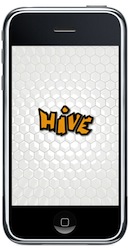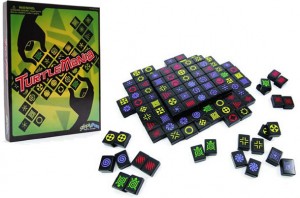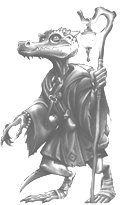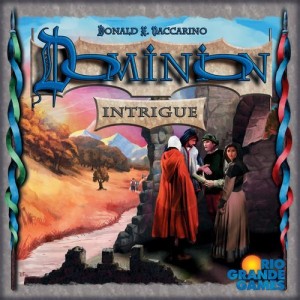 Shorty after writing about Hive on the iPhone I was lucky enough to receive a free copy from Lotusland Studios.
Shorty after writing about Hive on the iPhone I was lucky enough to receive a free copy from Lotusland Studios.
At first boot I was a little put off by the 3d layout of the playspace and tiles, but after a little time with the game I came to enjoy it. The interface and controls seem well thought out, and the camera automatically moves and zooms as it needs to (this can be turned off in the options if you don’t like it.)
If you’ve played Hive, then you pretty know what to expect from the game itself, and know that the game shines on its own. The beauty of the iPhone version is in the details. For starters, the game includes the Mosquito tile, an expansion to Hive that was originally hard to come by. You can also change the playspace and the tile themes. For tiles, you can play with the 2nd edition wooden tiles, the 3rd edition bakelite tiles, or a high contrast set of tiles that are basically just bright white and dark black. The soundtrack to the game is very well done, and not too distracting to play. You can also listen to your own music while playing, a feature that most iPhone games seem to have.
All of that is spit and polish. How well does it play?
The games beginner bots are pretty easy for an experienced player, and that was one of my peeves of the game. You have to unlock harder difficulties, and for those who know the game, it’s tedious to go through playing the easier bots. Once that’s said and done, there’s plenty of challenge to be had in single player games.
The game also supports 2 players on 1 iPhone, but sadly no multiplayer over the network or bluetooth. Hopefully these features make it into a future version.
Overall, Hive for the iPhone is a solid win, and at around $5, you can’t go wrong.
 I was given this one a while ago by SimplyFun, but it fits well in our impromptu mini-series on games of speed. TurtleMania comes with 136 heavy plastic tiles and plays with up to six people in a very rapid 10 minutes. The design was inspired by the pieces in the Chinese game of Mahjong. Here, though, the game has been boiled down to competitive pattern recognition, which when I put it that way doesn’t sound as lively as it usually turns out to be when you lift that cover off and start the dash for tiles.
I was given this one a while ago by SimplyFun, but it fits well in our impromptu mini-series on games of speed. TurtleMania comes with 136 heavy plastic tiles and plays with up to six people in a very rapid 10 minutes. The design was inspired by the pieces in the Chinese game of Mahjong. Here, though, the game has been boiled down to competitive pattern recognition, which when I put it that way doesn’t sound as lively as it usually turns out to be when you lift that cover off and start the dash for tiles.
So what’s the difference between TurtleMania and those numbered card games? Just that instead of throwing out cards in a certain order, you’ll be grabbing tiles in pairs of matching symbols. Again, the fun comes mostly from the hectic nature of play. However, SimplyFun has upgraded that basic approach with some very colorful, substantial, and attractive tiles. Seriously, I don’t think you’ll find a better game deal by weight.
- Comments Off on Second Look—TurtleMania
Second Look—Geek Chic Tables
21 Jul
Posted by David Miller as Miniatures, Modern Board Games, Other, RPGs, War Games
Recently, I had a chance at closer inspection of Geek Chic’s latest offerings of gamer furniture, the Spartan and Emissary tables. Whereas the original Sultan is no-holds-barred luxury gamer fantasy, these two are a bit more practical, though no less beautiful. The Spartan is a stand-around table, with significant storage, and made primarily as a miniatures platform. The Emissary will do double-duty as a very nice dining-room table with hidden gaming features. Customizable drawers can be used to store books or converted in to desks, and the recessed playing surface can be covered with leaves for protecting a game in progress or actually eating a meal. But here, let me show you what I’m talking about:
 Far be it from me to suggest that the internet won’t do as a source of gaming info. Yet even so, I would agree that there’s something uniquely simple and pleasant about holding a print magazine in your hands, reading it in bed (or that other room in your house), and recklessly stuffing it into your pocket or briefcase. And in terms of gaming magazines, Kobold Quarterly is absolutely top notch.
Far be it from me to suggest that the internet won’t do as a source of gaming info. Yet even so, I would agree that there’s something uniquely simple and pleasant about holding a print magazine in your hands, reading it in bed (or that other room in your house), and recklessly stuffing it into your pocket or briefcase. And in terms of gaming magazines, Kobold Quarterly is absolutely top notch.
In case you’re not familiar with it, Kobold Quarterly is edited and published by Wolfgang Baur and focuses on Dungeons & Dragons roleplaying, including 3.5, Paizo’s Pathfinder, and 4th Edition. Regular features include “Ecology Of…” monster articles and an “Ask the Kobold” advice column. Interspersed with interviews, optional rules, inspiring art, setting material, and product reviews, the magazine is at once both familiar and current.
Soon to be published issue number 10 continues to build on this successful formula. I had an opportunity this week to read a prepress copy and found some wonderful stuff. In particular I enjoyed the new Wicked Fantasy series, which launched this issue with a twisted take on Halflings. On the surface, Haffuns are just like you’d expect—short, subservient, and adept at slight-of-hand. The race’s mysterious origins, though, hide a darker secret. Many have infiltrated diplomatic circles and royal courts, while those known as Wipla reject polite society in favor of adventure and the Yffur are pint-sized ruthless street gangs. Other articles I enjoyed were one on the history and advantages of the halberd, a background piece on gelatinous cubes (including a how-to on care and breeding), and a selection of 4E skill challenges fit for dungeon adventures.
The only thing missing is Finieous Fingers.
 Dominion: Intrigue hits the streets Friday amid much anticipation by fans of the original Dominion. Fortunately, I’ve had a chance to play it a number of times already, having purchased a copy at Origins. Actually, Dominion was a game that I didn’t expect to like, but that opinion changed quickly after my first game! The basic mechanics are simple and easy to learn, the action is fast, yet intelligent play is clearly rewarded.
Dominion: Intrigue hits the streets Friday amid much anticipation by fans of the original Dominion. Fortunately, I’ve had a chance to play it a number of times already, having purchased a copy at Origins. Actually, Dominion was a game that I didn’t expect to like, but that opinion changed quickly after my first game! The basic mechanics are simple and easy to learn, the action is fast, yet intelligent play is clearly rewarded.
Intrigue is an expansion that adds just a touch more complexity. For example, in this box are two cards that are both Action and Victory, and one card that is both Treasure and Victory (those are—if you haven’t played the original—unusual dual-purpose cards). Also, several of the cards give you options to choose from, such as the Steward card: “Choose one: +2 Cards; or +2 Coin; or trash 2 cards from your hand.” Still, I found myself picking up the benefits and challenges of each quickly. Try out the “Best Wishes” recommended set. Even when it works against you, it’s hard not to appreciate the player who responds to a Torturer by voluntarily taking a Curse card, only to play a Masquerade and immediately pass it to their left. Or there’s the Scout and Wishing Well combination, where you get to reorder the top four cards on your draw deck, then guess the top card to put it in to your hand. Baron is a card whose value may not be apparent at first, but I love how well it fits the theme, as it encourages you to accumulate Estates.
Overall, a really great game that works well on its own or in combination with the original. The only question left—to sleeve the cards or not.
Trending
- Home
- Master Malaysia, Designed by Committee
- Fairy Crystal Forest
- Dapper Devil Accessories
- The Truth About Dominoes On Sunday in Alabama
- MayDay Games Slammed Over Handling of Crokinole Board Problems
- Chess Set Smaller Than the Head of a Pin
- Vintage Return of the Jedi: Play-for-Power Card Game is easier to find than the original cut of the movie
- Whipcash, a Game to Make You Depressed
- CHH Chess Sets
Archives
Most Popular Articles
- The 20 Most Valuable Vintage Board Games
- Sequence Game, and Variants
- Baila, the Estonian Drinking Card Game
- USPS Adds Board Game Flat Rate Box
- The 13 Most Popular Dice Games
- The Truth About Dominoes On Sunday in Alabama
- Are Board Games Dangerous?
- Oh the Irony—Illuminati Card Game Continues to Inspire Conspiracy Theorists
- The Convoluted Story of Iron Wind Metals, Ral Partha, and Battletech Miniatures
- Guess Who? The Naked Version
Recent Posts
- Toy Fair 2019—Breaking Games
- Talisman Kingdom Hearts Edition
- Toy Fair 2019—Winning Moves
- Toy Fair 2019—Games Workshop
- Toy Fair 2019—Star Wars Lightsaber Academy
- Toy Fair 2019—Stranger Things Games
- Toy Fair 2019—HABA
- Licensing Roundup
- Game Bandit
- 2018 A Difficult Year For Hasbro But Not For D&D Or MtG
Recent Comments
- on Toy Fair 2019—Winning Moves
- on Game Bandit
- on Second Look—Dungeons & Dragons Waterdeep Dragon Heist
- on Crowdfunding Highlights
- on Beyblade SlingShock
- on Game Bandit
- on Game Bandit
- on Watch This Game!, the Board Game Review Board Game
- on Second Look—Vampire: The Masquerade 5th Edition
- on Palladium Books Loses Robotech IP License, Cancels Five-Year-Overdue Robotech RPG Tactics Kickstarter




